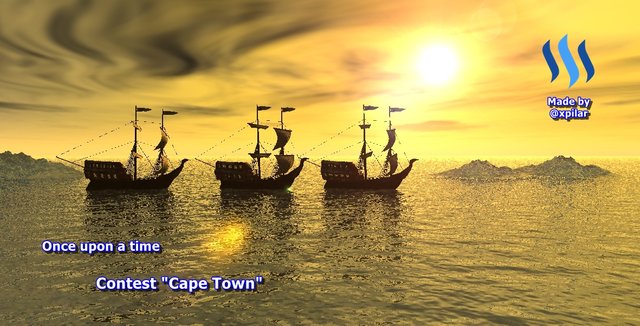RE: New Contest from @Xpilar 23/11-2017 "get free upvote"
Once upon the time: The Cape City.
Thank @xpilar for bring this competition, i will be sharing about city town of cape, you would read and understand what colour people's of south Africa experienced in the early 14s to 17s century. This city called "Cape Town" is an ancient city in the history.
Human communities had lived in the Cape Peninsula and Western Cape long before the beginning of the Christian era, surviving by hunting, fishing and gathering edible plants and roots. They were the ancestors of the Khoisan peoples of modern times - the Bushmen (San) and the Hottentot (Khoikhoi).
The Bushmen were hunter-gatherers who lived in small, loosely knit groups of about 20 persons. They were highly mobile on account of their dependence on game, and for the same reason widely dispersed territorially. The Hottentot, in comparison, were mainly herders along the Orange River, the boundary river between South Africa and Namibia, and the coastal belt stretching from Namibia around Cape Point to the Eastern Cape. Both groups were thought to have migrated southward, ahead of the Bantu-speaking peoples whose ancestral home lay well in the north.
Before the Dutch came to the Cape, the Hottentot conducted trade with their Bantu-speaking neighbours in cattle and dagga (marijuana) and, to a lesser extent, iron and copper. After the arrival of men from Europe, they traded their cattle for tobacco and began to act as brokers in developing trade between the Europeans and the Xhosa tribes to the east.
The European advance eventually cost the Hottentot their land, stock and trade. Twice defeated in battle in 1713 and 1755, and decimated by smallpox, they ultimately lost their identity as a distinct cultural group and intermarried with slaves and others to form the Cape Coloured people.
The earliest known remnants in the region were found at Peers Cave in Fish Hoek and date to between 15,000 and 12,000 years ago. Little is known of the history of the region's first residents, since there is no written history from the area before it was first mentioned by a great Portuguese who explore Bartolomeu Dias in 1486 who was the first European to reach the area and named it "Cape of Storms" (Cabo das Tormentas). It was later renamed by John II of Portugal as "Cape of Good Hope" (Cabo da Boa Esperança) because of the great optimism engendered by the opening of a sea route to India and the East. Vasco da Gama recorded a sighting of the Cape of Good Hope in 1497. In the late 16th century, Portuguese, French, Danish, Dutch and English but mainly Portuguese ships regularly stopped over in Table Bay en route to the Indies. They traded tobacco, copper and iron with the Khoikhoi in exchange for fresh meat.
Also, the city is famous for its harbour, for its natural setting in the Cape Floristic Region, and for such well-known landmarks as Table Mountain and Cape Point. As of 2014, it is the 10th most populous city in Africa and home to 64% of the Western Cape's population. It is one of the most multicultural cities in the world, reflecting its role as a major destination for immigrants and expatriates to South Africa. In 2014 Cape city was named the World Design Capital by the International Council of Societies of Industrial Design and the city was also named the best place in the world to visit by both the American and the British.

Thanks for reading.
Regards.
RE-STEEMED
Thanks @davidad
goo story
Nice story
nice story and good informazon @davidad
Thx .. Snr. @xpilar
Nice story @davidad
heheh
Great!!